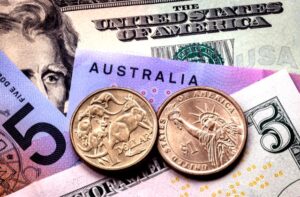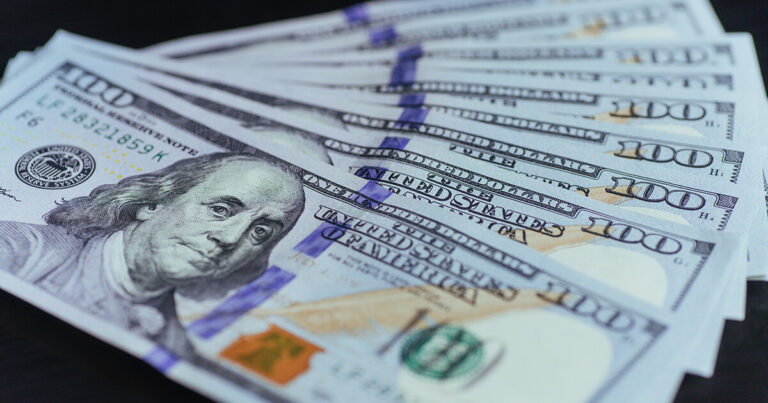
Covid 19, US politics and Brexit talks featured heavily in this week’s market news pushing economic data backstage. Fundamentals supported the safe-haven dollar, forcing forex traders to abandon riskier assets. Here is what happened in this weekly fundamental analysis of the g7 currencies.
The Fundamentals
No Deal Brexit
The 15th October Brexit deadline passed without any agreement. Negotiators concluded talks on Friday and Boris Johnson, British PM, said trade agreement is unlikely unless European Union softened its stand. The UK warned of no deal Brexit and informed Brussels not to bother with more negotiations on Monday.
Covid 19
The coronavirus spikes continued, with many countries recording daily new record highs. If the infection does not stabilize soon, then another round of full lockdown is forthcoming. Currently confirmed cases are fast approaching 40 million and fatalities slightly above 1 million. India, the USA, and Europe are worse hit by the disease.
US Politics
With slightly over two weeks to the US elections, campaigns are in the final stretch. It continued to dominate market news over the week affecting the performance of the g7 currencies. US politics affects all eco economies and creates risk aversion measures among traders to support safe-haven currencies.
Crude Oil Prices
Over the week, oil prices improved slightly to uplift the performance of commodity-related assets. Weak oil demand was due to high inventories and tread of covid 19 resurgence. By the close of the week ending 18th October, crude oil increased by 0.69%, closing at 40.88 per barrel.
Economic Data
All the g7 countries released economic data but did not significantly impact the volatile forex market. An improved economy is favorable for riskier assets.
Fundamental Analysis & Economic Review Of The G7 Currencies
Table; performance summary of G7 currencies
| Currency pair | 12th October | 18th October | Average | Percentage change | Remarks |
| usd | 93.104 | 93.679 | 93.510 | 0.660 | increase |
| gbp/usd | 1.3064 | 1.2913 | 1.2967 | 1.0195 | drop |
| eur/usd | 1.1813 | 1.1718 | 1.1745 | 0.8965 | drop |
| usd/jpy | 105.30 | 105.40 | 105.35 | 0.18 | gain |
| usd/chf | 0.9091 | 0.9146 | 0.9135 | 0.4945 | gain |
| usd/cad | 1.3111 | 1.3187 | 1.3160 | 0.5260 | gain |
| aud/usd | 0.7207 | 0.7080 | 0.7140 | 2.20 | drop |
| nzd/usd | 0.6645 | 0.6604 | 0.6629 | 0.9004 | drop |
USD Rebounds
In a relatively busy week on the US economic diary, the greenback rebounded from 2 consecutive weeks in the red. Despite fluctuating over the week. It managed to gain 0.67%, closing at 93.682, reversing a previous week’s loss of 0.87%. The dollar’s performance was driven by economic updates, coronavirus spikes, US politics, and Brexit talks.
Early in the week, interest rates took center stage while retail sales and jobless claims took charge mid-week onwards. Consumer sentiments closed the week, rising from 80.4 to 81.2. Jobless claims rose from 845k to 898k, indicating a stalled market recovery.
While retail sales increased by 1.9% to uplift the dollar, Industrial production dropped by 0.6%. A combination of poor market conditions, lack of additional stimulus, and coronavirus spikes market news pushed the greenback downwards.
On Friday, the dollar rallied against other currencies thanks to the improved economic data. Global sentiments turned negative as hopes for extra stimulus funds for the US economy failed to materialize over the week. The dreadlock came as the democrats and republicans were unable to pass an additional stimulus bill.
GBP/USD
Covid 19, economic data, and Brexit talks fundamentals combined forces to drive the sterling pound’s performance. Market news indicates that claimant count failed to impress, and employment figures dropped drastically. Employment decreased by 153k, leading to an upsurge in the unemployment rate from 4.1% to 4.5%.
While economic data caused the pound to fluctuate, Brexit talks, and COVID-19 ultimately sank it. Continued spikes in new coronavirus cases and another round of lockdown measures weighed heavily on the pound. Stalemate in the Brexit talks further devastated the sterling pound.
On Friday, Boris Johnson proclaimed that the final option is a no deal Brexit unless the European Union changed its position. According to him, there is no point for more negotiations, and EU negotiator Michel Barnier should not return to London, either, in the coming week.
Sterling Pound lost 0.93% to close at 1.2915, to reverse a 0.78% previous week’s gain.
EUR/USD
The Eurozone’s economic sentiments fell from 73.9 to 52.3. The Brexit stalemate and worries over the US Elections weighed heavily against the euro currency.
Mid-week, the industrial production figures rose slightly by 0.7%, falling short of the earlier projection. Trade data also disappointed as it contracted from €27.9bn to €14.7bn. A second wave resurgence witnessed in the Eurozone will force the reintroduction of containment measures. Due to the coronavirus, the eurozone outlook is grim, and the euro will continue to fall.
In the week, the euro currency was reduced by 0.91% to 1.1718, reversing the 0.94% gain recorded in the previous week.
USD/CHF
In the week ending 18th October, the Swiss franc received heavy pounding and lost 0.4945% to the dollar closing at 0.9091. Spikes in covid 19 infections across Europe primarily drove usd to chf market rate. Forex traders became jittery as countries reverted stringent lockdown measures or planned to reintroduce.
The no deal Brexit market news over the week did not help it, either. The risks associated with the US campaigns favored the dollar more than the Swiss franc.
Furthermore, a strengthened greenback ensured that the usd to chf exchange rate did have a rebound chance. Diminishing hopes on the US stimulus package proved fatal for the swiss franc, also.
In the Far East,
The Japanese yen increased by 0.21% to close at 105.4. Previously it had fallen by 0.31%. The usd/jpy currency pair’s performance was driven by covid 19, economic data, and US politics.
Negative economic data pressured the yen downwards. Core machinery orders increased dismally by 0.2%; Industrial production dropped from 1.7% to 1.0%. However, negative risk sentiments provided much-needed support to the yen, cushioning it against further fall.
Forex traders abandoned the yen amid spikes in coronavirus and an improved economy in the US. US politics also proved fatal for the yen. The US administration’s failure to unlock the coronavirus economic recovery stimulus bill ensured that the yen did not close in the positive territories.
USD/CAD
Economic data from Canada had a muted effect on the Canadian dollar, leaving its performance to covid 19 resurgences, negative risk sentiments, reintroduction of lockdown measures, and crude oil prices.
Beginning of the week, an increase in crude oil prices supported the Canadian dollar. However, the gains were reversed by coronavirus pandemics effects. Continued spikes in coronavirus cases and reintroduction of lockdown measures threats weighed heavily on the Lonnie.
In the week ending 18th October, the Loonie lost 0.52% to the US dollar closing at 1.3189. In the previous week, it had risen by 0.87%.
AUD/USD Bearish,
The Aussie experienced a bearish week, sliding by 2.20% to close lower at 0.7081.
Mixed economic results from Canada did not help aud to usd trading. In contrast, consumer confidence continued to increase and employment figures, on the other hand, disappointed. A decline of 29.5k in the employment sector fuelled the unemployment rate to rise from 6.8% to 6.9%.
Risk Aversion measures and negative monetary policy primarily nailed the downfall of the Aussie. The Reserve Bank of Australia hinted at a potential reduction in interest rates and an aggressive bond-buying program early next month.
The aud to usd exchange rate slipped further amid global spikes in coronavirus new infections and fading hopes on the US stimulus bill. The US improved economy contributed to the decline of the Aussie.
NZD/USD
Positive economic data supported the kiwi dollar but could not manage to uplift it out of the red. It lost a modest 0.96% to the US dollar closing at 0.6602. The retail sales went up by 5.4%, and the production index rose from 50.7 to 54.0.
Negative sentiments from central made matters worse for the kiwi. The move came as the Reserve Bank of NewZealand announced plans to reduce interest rates early next year.
Coronavirus spikes, Brexit uncertainty, and the US improved economy ensured that the kiwi closed in the red. A strengthening greenback pushed the kiwi down. However, towards the end of the week, risk market news was favorable to the NewZealand dollar.
Conclusion
The American dollar rallied strongly and managed to strengthen against all the other g7 currencies. It rode high on covid 19 spikes, no deal Brexit, and the US’s improved economic status.
With coronavirus surging across many countries and US politics on market news, the greenback technically heads for more gains against the riskier assets. Traders will continue to monitor the risk of no deal Brexit and its impacts in the coming weeks.




